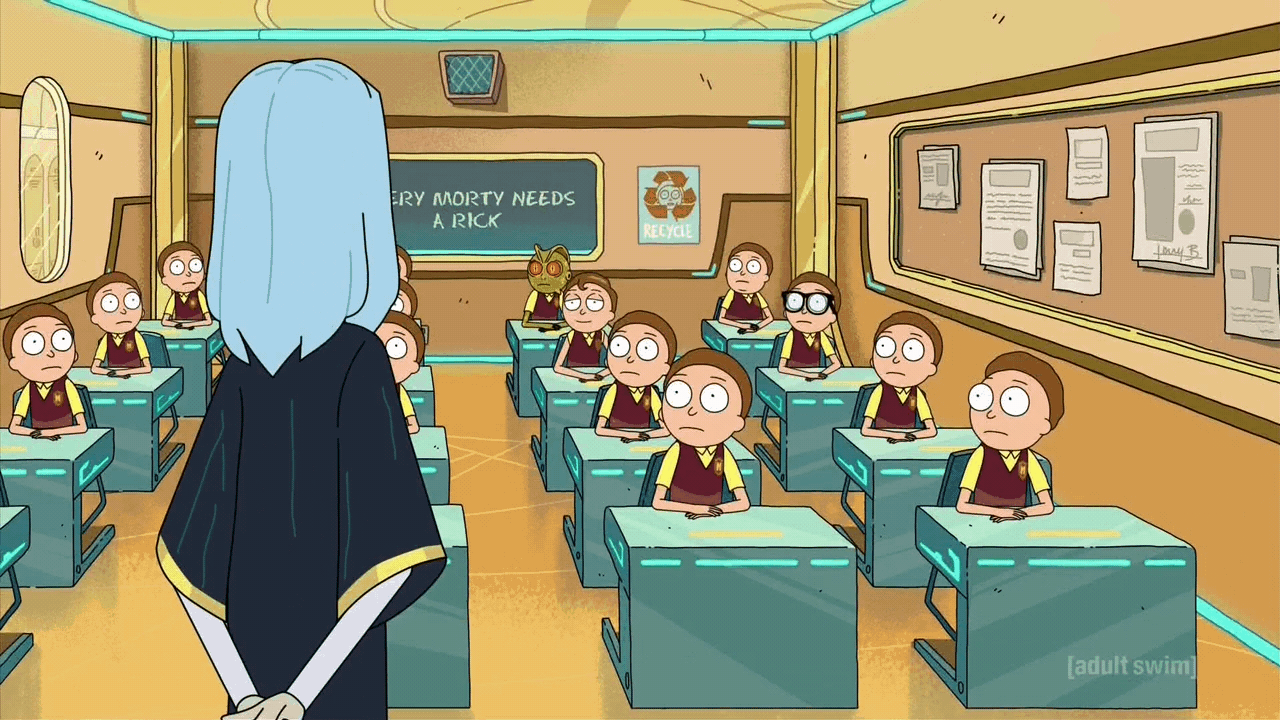Notes on #BoisLockerRoom & Other Maladies
At the beginning of the month, the steady stream of pandemic and lockdown news was disrupted by a scandal centered on a page on Instagram called ‘BoisLockerRoom’. It was created & run by and for elite Delhi school boys so they could post photos of girls they knew and group comment in a manner that was extremely lewd and sexually abusive. The existence of the page, the name of the members & their interactions therein were publically uncovered by their peers on social media, some of whom were girls whose photos were uploaded onto the group.
This incident sent the social and mainstream media ecosystem into a tailspin – there was every kind of outrage, panic, support, disdain, despair, disbelief, disconcertment. The one aspect that everyone seemed to agree on is that the problem is pervasive.
The #BoisLockerRoom is one tiny satellite orbiting in the gravitational influence of a large, toxic body which all of us inhabit. In such historically persistent situations, one must be careful to not just point a problem away. The more nuanced conversations around the incident have tried to examine the toxicity under our feet and the structure through which it creeps. And lest ‘#BoisLockerRoom’ be filed under ‘yet another alarm bell’, it is high time to examine complexities with the requisite complicities.
- Click here For #BoisLockerRoom Chronology or Else Read Ahead
3rd May 2020 – BoisLockersRoom was an Instagram group where around 50 school boys 14 to 18 who studied in elite Delhi Schools, would upload pictures of girls they scraped from the girls’ online profiles, identify the girls and then comment on them in lewd and sexually abusive manner. Some of the girls they targeted were minors. The group came to light when a girl whose photos were found on the group and her friends decided to speak out. They released screenshots of the content and conversations taking place in the group on social media where it quickly went viral.
4th May 2020 – News of the incidents crossed over to mainstream media. The Delhi Commission of Women took cognizance of the incident and issued notices to Instagram & Delhi Police. They demanded the arrest of all children in the group. Delhi Police contacted Instagram and asked them to share details of the group’s members and admin.
5th May 2020– The Delhi Police registered an FIR and a 15 year old boy was placed in custody.
6th May 2020– In the aftermath of the BoisLockerRoom, a few girls on social media felt empowered to call out incidents of abuse they had faced and the names of their abusers. One of the accusations cascaded into a boy committing suicide. This was initially conflated as being a part of ‘BoisLockerRoom’ case. But it was later clarified as a separate but related incident.
Another boy was arrested, a major, around 18 years of age. More boys connected to the incident were grilled by the police.
Two advocates write in and urge the Delhi High Court to take suo motu cognizance of the incident.9th May 2020– Instagram replied to DCW announcing that it was co-operating with the police. However DCW sent another notice in seeking clarity as to how it dealt with sexual harassment cases. A PIL was moved in Delhi High Court seeking an SIT or CBI investigation into the case.
10th May 2020– Delhi Police made a statement in which they mentioned that a girl created a fake account as a boy and suggested sexual assault on herself. This was conflated with the #BoisLockerRoom case and later clarified as a separate incident.
11th May 2020– A boy claiming to be part of the group that blew that whistle on the #BoisLockerRoom described the call out as a planned event they put together in hopes of creating a larger movement because ‘enough was enough’. He also clarified that reports of ‘morphed images’ found on the group were baseless.
(The following material is the result of a debate that ensued among the working-from-home team of Aarambh India. The discussion was more eclectic than heated which may explain the presence of paradoxes. But, it’s never going to be simple, is it?)
1. Future Public
If current trends hold, we are heading towards a future where our lives are going to be more public than private. The children with own devices and reliable internet connections are already participating in this future. Among other things, they access the so called ‘public squares’ of the internet to challenge and speak out against societal ‘status quos’ that they find oppressive, unfair or just ‘non-responsive’. On one end, it can be a rote yet transparent and public ‘complaint mechanism’ (eg: complaining to a cell phone service provider) but on the other end the same set of strategies may be used for individual ‘naming & shaming’. And this can also result in retaliation which employs the very same set of strategies.
In the near future, incidents like ‘#BoisLockerRoom’ will be recurring and will play out at various scales. It should be considered that this is also an outcome of alienation from systems of due process like electoral politics, justice system, platform reporting mechanisms, sexual harassment committees, civil society organizations etc. Clearly the children did not find spaces to discuss these issues within their families & communities.
Such incidents can be signs that these systems & cultures need fixing while underscoring the need for private spaces and safe spaces within or adjacent to these so-called ‘public squares’ where support networks and counter speech are created and nurtured.
2. Call Out Culture / Naming & Shaming
In the ‘#BoisLockerRoom’ incident a group of girls and boys who were tired of being subject to shaming and abuse or being considered as a participant in the shaming & abuse strategized and decided to call out their peers in social media. It was a movement led by the victims, supporters and friends of the victims. Their feeling of outrage is understandable. Their courage, planning and forming of a support system is laudable.
Many mentioned that the naming & shaming of minors running the group was problematic. This feeling intensified when there was some misinformation that one of the boys who was ‘named & shamed’ committed suicide. Also India has a cultural affinity to mob justice which has a problematic recent & past history.
But again from the girl’s point of view, ‘privacy’ and ‘modesty’ were obstacles that impeded their wish to end the abuse. To achieve any sort of justice, they had to act against those principles. (In a manner similar to the ‘Bell Bajao Campaign’)
3. Online Abuse is Real Abuse
There have been several attempts to play-up the severity of the backlash on the boys especially in the light of the misinformation about the suicide and the fake snapchat account. It is being suggested that the girl’s virtual naming and shaming of the boys is having a ‘real effect’ on the lives of the boys.
That is definitely true. From a victim’s perspective, online abuse doesn’t feel ‘virtual’. It feels real and the effects are real as well.
Not unlike what the girls must have gone through when they discovered the exchanges the boys were having on the page.
4. The Attention Economy aka Losing Narrative Control
When a topic is trending it creates an incentive for all kinds of users to weigh in and participate. With a variety of diverse users from celebrities ,media, influencers, academicians, politicians, civil society organizations all weighing in the ‘#BoisLockerRoom’, the narrative took on its own momentum and spun in various directions. And while many were in it for the right reasons, the aims and goals of the movement also became vulnerable to cynical algorithms of platforms and cynical & easy agendas of people in positions of power. Always a terrible combination.
Adults who were engaging in naming, shaming and pushing for the incarceration of minors were indulging in most misguided and suspect notions.
5. No Children in Jails
In a year with countless documented evidences of police brutality against youth, advocating for punitive justice may not have been the right direction to take. But that’s where we have ended up thanks to cynical & misguided agendas. Carceral approaches make for easy scapegoating but bears little truck with justice of any kind.
There should definitely be strict reprimands and the boys must journey through repentance, towards reform. But are police and courts the sites where holistic or appropriate outcomes can be expected?
The accused in this case study in elite schools. It is rare occasion in the country where people from privileged backgrounds find themselves at least temporarily at the mercy of the systems. But the boys, thoroughly spoilt and wholly rotten, are still mostly minors & the current justice system is no place for any minor, even the spoilt-est rotten-est ones.
Pushing for police response tends to escalate the formulation of draconian law and policy or witch-hunts, (as it has happened in the past) and then, it will be the marginalized children who bear the brunt.
6. Confusion, Misinformation, Data Voids
Attention economy dictates the need to react in real time which results in bad takes and misinformation. The ‘morphed images’ reported to have been found in the Instagram page was a case of fake news. Instantaneous reactions to the fake snapchat account & the suicide, created data voids where for a brief while, it became impossible to fact check the truth.
The lingering effects of these voids are still present in the online sphere where misinformation is fueling the perceived victimization of the accused and their sympathizers and well as the radical discourse of many who are opposed to the movement.
7. Pervasive Online Ecosystems of Hate & Abuse
“#BoisLockerRoom” is reminiscent of an entire online culture that plays out in broad daylight. Ask any female journalist.
It is not uncommon to find offensive quantities of sexually abusive language in the public squares and private spaces of social media. It is an extremely visible phenomenon which has seemingly been normalized. A lot of it is difficult to report and take down especially if it is touted by people in positions of power or those associated with them. Counterspeech is actively blocked or fails and results in further harassment of the user who attempts it. A majority of this offensive content is perpetrated by adults.
Similar power dynamics are replicated in younger groups such as the Indian meme sphere. There is that all-familiar dog-whistling of offensive statements and an even more familiar sight of users being cavalier in spreading hate but quick to take offence if someone proves them wrong or retaliates.
Just like their dads???
8. Not Just Toxicity. It is Entitlement.
One cannot discuss the Indian male separately from the various privileges that the Indian cultural milieu confers upon him. It is not mere toxicity. What is manifesting in the behavior of the boys is a sense of entitlement. To comprehensively discuss entitlements one must consider discussions on caste & class which confers hierarchies, status and claims on people’s lives & bodies.
Peer groups are important sites for intervention. Elements of Indian ‘Male Bonding’ need to go beyond facilitating the objectification of women. There is a need for boys to understand than even if they are not actively participating they need not be bystanders. There is also a need to establish that men and women aren’t two teams who are fighting against each other but can be allies.
Education is being cited as a cure. But all around us, we see educated people who are part of the problem. There is a need for deeper cultural reforms in which families and neighborhoods need to participate.
This incident should in no way result in an increased surveillance on girls or in denying girls access to the online space. If anything the Indian online ecosystem needs more women online.
9. Girl’s Locker Room
There was also a “#GirlsLockerRoom” that came to light. It is not completely clear but there are reports indicating that it was an attempt at counter-speech. Nonetheless it caused some consternation.
In the “#BoysLockerRoom” fully dressed minor girls were objectified. If whataboutery were the discourse, it is sufficient to say that “#GirlsLockerRoom” would in no way include objectification of fully dressed minor boys.
The ‘Male gaze’ is society’s norm. Spaces defined by the ‘female gaze’ are extremely rare. In fact it is something which is negated so the very fact that it had a space should be notable rather than worrying.
10. Immediate Interventions
When such situations will recur, what can be our intervention?
For Victims:
They would need us to support and believe in their narrative and in their movement, Mental Health Support, for internet platforms to take down content faster, ensure no reuploads, block the offending account, and for us to not hijacking their movement for cynical ends
For Accused:
They need support or they will find it in questionable space. Cancel culture stigmatizes by contact and results in trashing. This should be actively resisted. Reform includes sexuality & relationship education. They must also be provided with mental health support.
Concluding Comments
It would serve good to remember that 4 days before the nation went into lockdown, 4 men convicted of gang rape & murder in the Nirbhaya Case of 2013 were hanged to death for their crimes. The outrage that took over the streets in the initial aftermath demanded answers for long standing issues- from the basic lack of safety of women in public spaces in the country to the tone deafness of the legal framework when dealing with sexual abuse to the power asymmetries implicit in a patriarchal society that contributed to the vulnerability of women. In the end we settled for the tightening of the noose. Justice prevailed but we all know that we could have done better – called for reforms, more robust systems, a broader understanding of violence, formulated and implemented socio-cultural solutions.
It’s always a good time to take that up.
(As discussed by Aarti, Aditi, Arjun, Mallika, Minal, Priyanka,Sawleha, Shefali, Sid, Sudipta, Teemol & Uma)



















Glad to have red this chat room script . Well articulated ,the myriad layers. Children and reformative practices need to come centre stage
Thank you for your comments. If You liked it, please do share it.